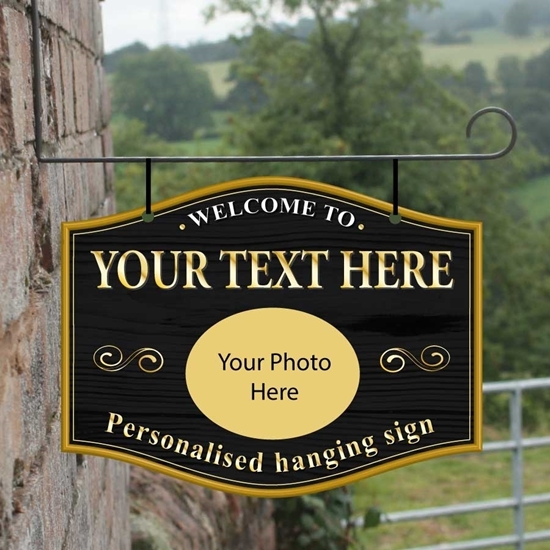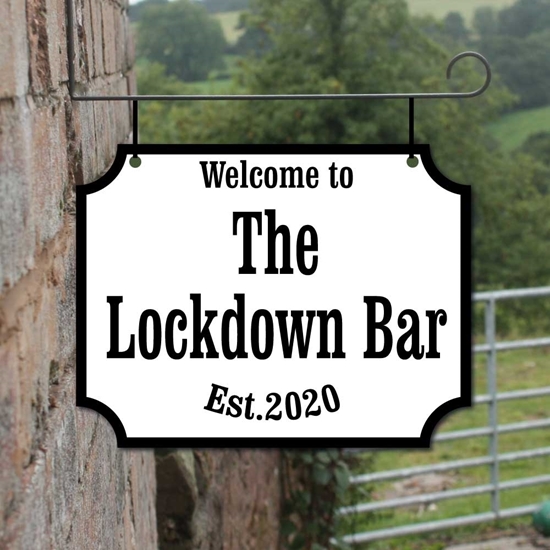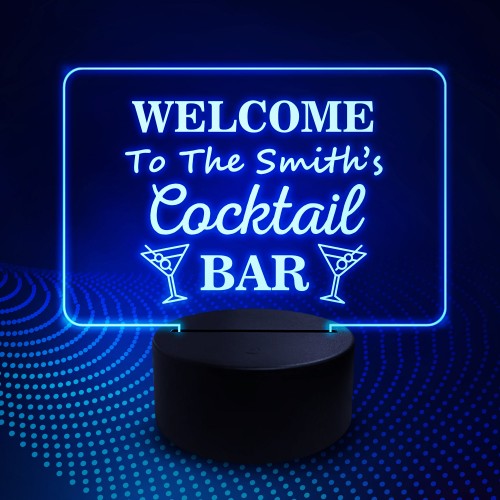Great Info For Choosing Bar Signs
Great Info For Choosing Bar Signs
Blog Article
What Are The Differences In The Sizes Of Bar Signs?
Bar signs differ in size and style based on their use, their location and overall aesthetic. This is a brief overview of how size variations impact the function and aesthetics of bar signage: 1. Large Signs
Use to bring attention to an region and to serve as an important focal place.
Uses External branding, main brand signage or feature walls.
Location: Usually, it is placed over entrances, on huge walls, or outside the bar area to attract customers.
Examples: large neon signs vintage-style signs, mural-type signs.
2. Medium Signs
The purpose is to provide information or to enhance the decor without dominating the space.
Applications: Menu boards, and directional signage.
Placement: Designed in a manner that is clear but not too overwhelming. For example behind the bar, over seating areas, or even on walls that are feature.
Examples include medium-sized chalkboards for daily specials, metal signs bearing the logo of the bar or themed decorative signs.
3. Small Signs
The purpose is to provide precise details or subtle decorative elements.
Uses for table signs, ornaments, or labels.
Placement: On tables, shelves, or within display cases where close-up view is expected.
Examples: Small frames of quotes or drink cards.
Size Factors
Visibility
Large Signs are designed to attract the attention of people passing by, and to establish the bar's presence.
Medium Signs They are perfect to ensure visibility while maximizing space efficiency and providing important information, while not overpowering decor.
Small Signs (small signs): These are ideal for small and intimate information, which can be placed at eye level.
Proportion
Signs should be proportional to the space to avoid overwhelming small areas. These signs are most designed for large and open areas.
Medium Signs Medium Signs are ideal for numerous interior spaces. They can be placed in various ways.
Small signs are perfect to add detail and be tucked away in smaller spaces.
Impact
Signs are big and bold. They stand out. They are often used to create a mood for an establishment.
Medium signs are a great balance between the decor and the visibility. They help create the ambience, and also communicate important information.
Small Signs: Adds beauty and details, which contributes to a multi-layered and rich visual experience.
Practicality
Large Signs require a substantial mounting and is more costly because of its dimensions.
Medium Signs - Easy to set up and move with the ability to change design.
Small Signs are easy to change and update They are ideal for environments that are dynamic, such as bars where the menus or promotions change frequently.
Functionality
Large signs are mostly functional and attractive.
Medium Signs: They're both decorative and functional. They are a source of vital information, but also enhance aesthetics.
Small signs: These are mostly functional, providing precise information. They are a part of the overall theme of the space in a subtle fashion.
The dimension of bar signs is determined by their function, the layout and impact they want to have on the patrons. The balance between these factors ensures that the signs are effective in contributing to the bar's atmosphere and the operational requirements. Read the top these details on personalised bar signs for site recommendations including design your own bar sign, hanging pub signs for sale, personalised outdoor bar signs, personalised metal pub signs, personalised bar signs, a bar sign, make your own bar sign, bar sign design, personalised garden pub sign, home pub signs and more.
What Is The Difference Between Bar Signs In Terms Of Mounting And Installation?
The installation and mounting of bar signs varies based on the kind, weight, dimension, location and use. This article will provide a more detailed look at the mounting and installation methods: Wall-mounted display
The main characteristics are that it is fixed directly to walls.
Methods:
Anchors and Screws: Usually employed on signs that are heavier (metal & wood) to ensure stability.
Adhesive strips are ideal for temporary and lighter installations (acrylic, foam board).
Brackets that are used to hold signs visible from walls for better visibility.
Uses: Indoor decor, menu boards, directional signs.
Features: Secure, flexible and allows for prominent display.
Negatives: May cause damage to walls, and are difficult to reposition.
2. Hanging signs
The ceilings are suspended from the overhangs and ceilings.
Methods:
Chains: durable and adjustable, perfect for heavy signs.
Cables: Modern designs usually use cables for their sleeker appearance.
Rods: Provide a rigid support structure.
Uses: Ceiling decor, directional signs, overhead promotional signs.
Benefits: High visibility, uses vertical space and is decorative.
Disadvantages
3. Signs for Freestanding Places
Characteristics of the product The stand isn't fixed to anything.
Methods:
A-Frames: Portable and foldable, often used to promote sidewalk advertisements.
Pedestal Stands: Stable base, ideal for indoor use.
Panel and post: Typical for large permanent signs.
Uses: Outdoor advertising, indoor directional signs, promotional displays.
Flexible, portable and able to be easily relocated.
The disadvantages are that it can be bulky. It also requires a lot of flooring space.
4. Window Signs
The characteristics of the windows are directly attached to them.
Methods:
Suction cups are easy to put in, remove and are suitable for signs with lighter weights.
Adhesive Vinyl can be used to create decals or graphics.
Static Cling - Permanent but not permanent. Reusable. It is easy to apply and take off.
Uses: Promotional messaging, branding, operating hours.
Advantages: Maximizes window space, highly visible from the outside.
Limitations: May be in the way of sunlight, but is limited by the size of the window.
5. Backlit and Edge-Lit Signs
Signs with lighting are a must-have.
Methods:
Wall mounting with electrical connections: It requires a secure connection and electrical connections.
Suspended with Power Cables Hanging technique is combined and integrated lighting.
Uses: Menu boards, high-visibility branding, and decorative elements.
Benefits: Enhance the visibility of your home, and provide attractive lighting.
Installation is more difficult and requires electrical skills.
6. Temporary Signs and Portable Signs
The design is simple to install and remove.
Methods:
Pop-Up Stands: Light and compact.
Banner Stands: Roll-up or retractable designs.
It is used for promotions, events and seasonal decorations.
Benefits: Fast and simple installation, and transportable.
Negatives
7. Magnetic Signs
The characteristics of magnetic force are used for attachment.
Methods:
Magnetic Strips: The magnetic strips are attached to the signs.
Magnetic Boards - Signs are affixed to a metal surface.
Uses: Changeable menu boards Temporary notices.
Benefits: No permanent fixtures are required, and the item is easy to replace.
Pros Magnetic surfaces aren't as strong and could cause less security.
8. Projection Signs
Characteristics: Light is used to project images and texts.
Methods:
Mounted projectors can be mounted securely to walls or ceilings.
Portable Projectors : Placed on stands or on other surfaces.
Displays with dynamic content are used to promote events, promotions and other promotional activities.
Benefits: No requirement to buy the physical sign, since content can be changed easily.
Negatives
Things to consider when mounting and installing
Weight and Size
Heavy Signs: Need more solid mounting methods, like screws and anchors.
Light Signs are created using different methods like adhesive strips and suction cups.
Durability
Permanent Signs: Utilize mounting techniques that are more durable and secure.
Temporary Signs - Select one that permits easy removal and repositioning.
Location
Indoor: More flexibility in methods and materials and less concern with weather resistance.
Outdoor: requires weather-resistant materials and a secure mounting order to withstand the elements.
Aesthetics
Concealed Mounting gives a clean appearance by hiding the hardware used to mount the device.
Signs can be enhanced by adding ornamental hardware.
Accessibility
Easy Access for Changes Important for signs that need frequent updates, like menu boards.
Security: Make sure the signs aren't easily altered with or snatched.
In analyzing these aspects the bar owners are able select the most appropriate mounting and install methods, that are secure and visible. View the top rated get redirected here for home pub signs for website examples including pub signs to buy, large bar signs, the staying inn bar sign, pub sign design ideas, personalised signs for home bar, personalised hanging pub signs, a bar sign, pub bar signs for sale, pub bar signs, signs for the bar and more.
What Is The Difference Between The Bar Signs Found In Regulations And Other Bar Signs?
There are a variety of regulations that apply to bar signs. These are state, local and federal laws to guarantee the safety of people and to ensure aesthetic standards. The regulations for bar signs vary. Size and Placement Regulations
Zoning laws: These regulations regulate where signs are placed, their size, distance, and height and height, as well as the distance between them and property lines, roadways or other buildings.
Historic Districts. Signs of all sizes, designs, and materials are prohibited to preserve the historic character.
2. Illumination Restrictions
Light Pollution: To minimize light pollution and to preserve nighttime settings, laws may limit the luminosity of the signs, their hue and their duration.
Safety considerations: Signs shouldn't create glare that can hinder pedestrians and drivers.
3. Signage content
Alcohol Advertising Some jurisdictions restrict alcohol advertising by prohibiting certain images and content that could be appealing to minors.
Health Warnings - Laws could require the display of health warnings on warnings about smoking or drinking alcohol.
4. Historic Preservation Regulations
Architectural Compatibility: Signs that are placed in historic districts should be in harmony with the architectural style and characteristics of the district, usually needing the approval of preservation commissions or boards.
Materials and Design Restrictions may apply to the material designs, colors, and design scheme of signs to ensure the integrity of the past.
5. Sign Permitting Process
Permit Requirements. Prior to installing or altering signs, bar owners may need to submit plans or pay a fee and get permission from the local authorities.
Code Compliance: To guarantee public security and accessibility, signs must adhere to building codes, safety regulations, and accessibility standards.
6. Sign Maintenance and Removal
Maintenance Requirements. It is the responsibility of the bar owner to ensure that signs are maintained in good repair and structurally sound, free of hazards, and conforming to regulations.
Signs that are abandoned: Regulations could regulate the removal of old or decaying signs to prevent blight and maintain the beauty of the area.
7. Digital Signage Regulations
Content Restrictions - Laws can restrict the content that is shown on digital signage, such as by prohibiting flashing lights and images that are offensive.
Digital Signage Operating Limits - Regulations can restrict brightness, motion or frequency of changes for digital signs in order to reduce visual clutter and distracting distractions.
8. Penalties and Enforcement
Inspections: Local authorities carry out periodic inspections to ensure that signs are in compliance with regulations. The issue of citations is for infractions.
Penalties: Penalties if you do not follow the rules may include fines, citations and orders to take down or alter signs, as well as legal actions.
9. Sign Variance Process
Bar Owners Can Apply for Variances: Bar owners are able to request variances to deviate the standard sign regulations. They must demonstrate that they have a valid justification for their decision and mitigate any negative impacts on aesthetics, safety, or security.
Public Input: Variances may require public hearings or input from members of the community or property owners in neighboring properties or business associations.
10. Community Engagement and Input
Public Consultation - Certain areas include community members in the creation and the implementation of signage regulations through holding public meetings or surveys.
Community Benefits: Sign regulations can include provisions that enhance the quality of signage or promote local businesses or assist in neighborhood revitalization initiatives.
In compliance with signage regulations, bar proprietors can ensure that the signage they put up enhance the visual attractiveness and worth of their establishment, and also contribute to the local community. They will also be legally compliant which lowers the possibility of fines, penalties or legal battles. See the recommended twofb.com bar signs for blog examples including garden bar sign personalised, home garden bar signs, to the pub sign, personalised garden bar signs, personalised cocktail sign, small pub signs, make a pub sign, the staying inn bar sign, pub bar signs for sale, personalised bar signs and more.